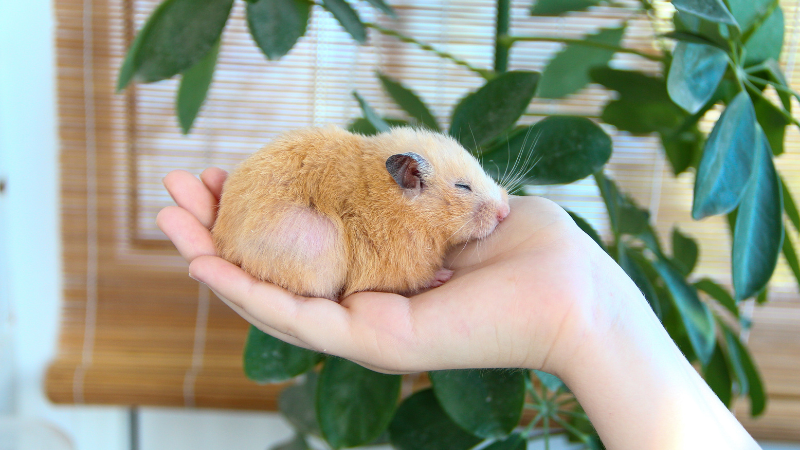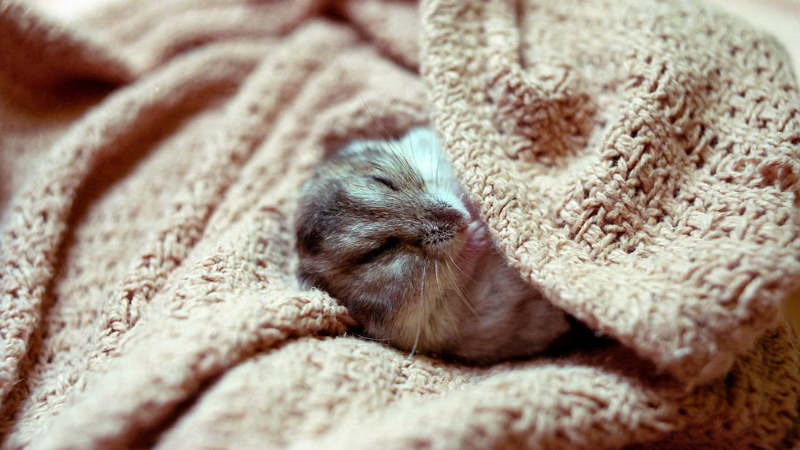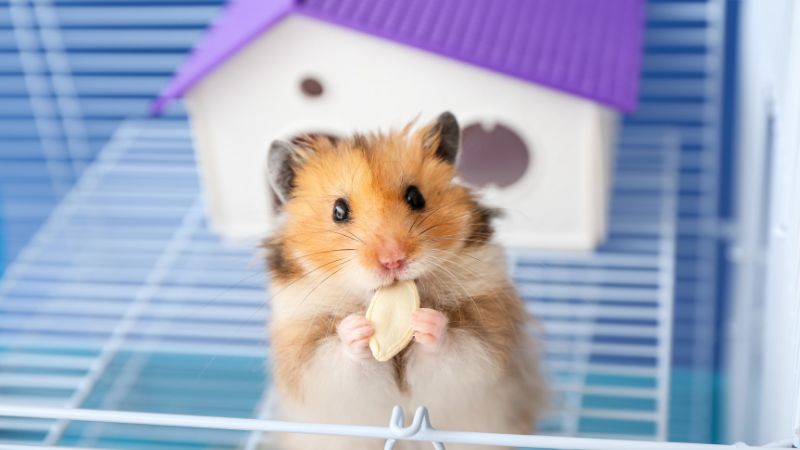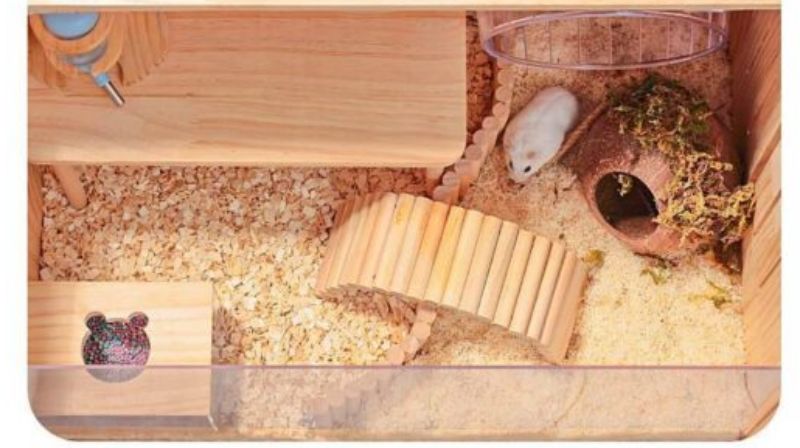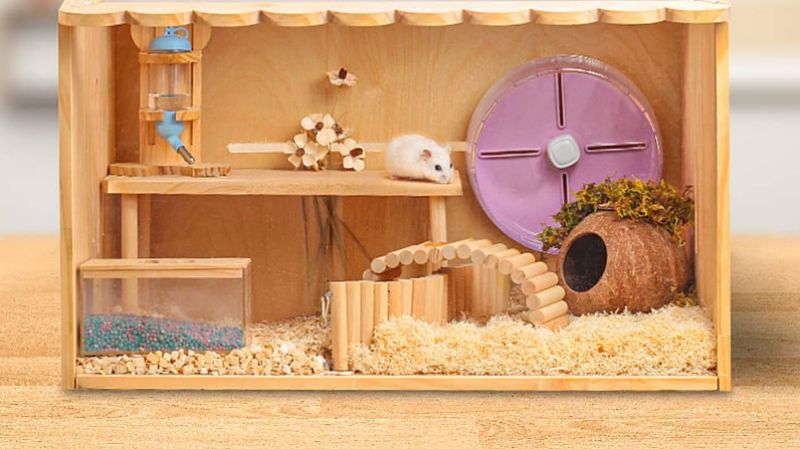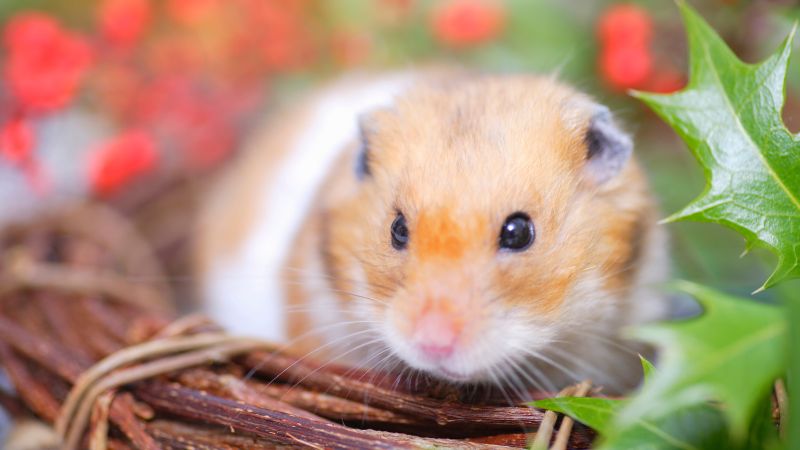Hamsters are sensitive to their environment. Changes in temperature, light exposure, and even stress can prompt them to hibernate.
-
Low Temperatures: A sudden or prolonged drop in temperature is the most common trigger for hibernation in hamsters. In the wild, hamsters hibernate to survive the winter when temperatures drop. In captivity, if the room temperature falls below 60°F (15.5°C), a hamster might go into hibernation.
-
Decreased Light: Reduced daylight hours can also induce hibernation. In the wild, shorter days signal the approach of winter. In a home setting, if a hamster doesn’t receive enough light, it can become confused and think winter is approaching.
-
Reduced Food Availability: In the wild, the scarcity of food during the winter months can be a trigger. If a hamster feels it’s not getting enough food, it may go into a hibernation state.
-
Sudden Changes in Environment: A sudden change in living conditions, such as a sharp drop in temperature or a sudden change in light conditions, can trigger hibernation. It’s always important to make environmental changes gradually for hamsters.
Myths about hamster hibernation
One widespread myth is that all breeds of hamsters hibernate. However, this is not the case; only specific breeds, such as the Syrian Hamster, exhibit this behavior.
Identifying hibernation patterns
Now that we’ve established that hamsters can indeed hibernate, it’s essential to recognize when and how they do so to provide them with the best care possible.
When do hamsters hibernate typically?
Typically, as the weather starts getting colder, hamsters might begin showing signs of hibernation. This usually occurs during the late fall and winter months.
3 steps to prevent unintentional hibernation
-
Maintain a consistent and warm room temperature.
-
Ensure the hamster has a stable light-dark cycle. This can be achieved by keeping them in a room with natural light or using artificial lights to mimic a natural day-night cycle.
-
Provide consistent access to food and fresh water.
How long can hamsters hibernate?
It varies. Some hamsters might hibernate for a few days, while others can go on for a week or more, depending on environmental conditions.
Unexpected reasons why hamsters hibernate
Apart from cold, a sudden change in their diet or living conditions can sometimes trigger hamster hibernation.
5 signs of hamster hibernation
To know more about “do hamsters hibernate?”, spotting a hibernating hamster isn’t always straightforward. Let’s uncover the signs that differentiate hibernation from other conditions.
While it might seem as though your hamster has become entirely immobile during hibernation, this isn’t entirely the case. If you observe closely, you’ll notice very subtle signs of life. For instance, the delicate twitching of their whiskers or a slight shift in position can indicate that they’re in a hibernating state rather than facing a more concerning issue.
- Changes in breathing patterns: slow but steady
A significant sign that differentiates a hibernating hamster from one facing potential health concerns is its breathing pattern. During hibernation, a hamster’s breathing rhythm slows down, becoming shallower and less regular. However, crucially, it doesn’t stop entirely. With a keen eye and a bit of patience, you can still observe the rise and fall of its body as it breathes.
- Body temperature: cool, not cold
When a hamster enters hibernation, its body temperature will indeed decrease. However, this reduction is moderate and not as extreme as one might initially assume. By gently feeling the hamster, you can discern that it’s cool to the touch but not icy cold.
- Distinguishing between a limp and a relaxed body
To the untrained eye, a hibernating hamster might appear lifeless due to its limp posture. However, there’s a notable difference between a truly lifeless body and one that’s in hibernation. The hibernating hamster’s body feels more relaxed and at ease rather than stiff or rigid, indicating a natural state of deep rest.
- Their reaction to external stimuli: slow to respond but not unresponsive
While a hibernating hamster won’t be as alert or responsive as when it’s awake, it’s not entirely unresponsive. A gentle touch, a soft call, or a slight nudge can sometimes awaken the hamster, albeit sluggishly. They might take a few moments to react and might appear drowsy or slow-moving initially.
Hibernation Vs. Hypothermia: know the difference
It’s vital to differentiate between natural hibernation and the life-threatening condition of hypothermia.
Hibernation vs. Hypothermia: what sets them apart?
-
Hibernation is a natural, protective response that some animals, including certain hamster species, employ as a survival mechanism during cold months. It involves reduced metabolic activity, decreased body temperature, and a state of dormancy. It’s typically reversible, and the hamster can “wake up” from this state once conditions are more favorable.
-
Hypothermia, on the other hand, is a dangerous condition that occurs when an animal’s body loses heat faster than it can produce heat. This leads to an involuntary and severe drop in body temperature. Unlike hibernation, hypothermia is not a protective mechanism; rather, it’s a direct result of prolonged exposure to cold conditions and can be life-threatening.
Recognizing the symptoms of hypothermia
While there are some overlapping symptoms between hibernation and hypothermia, certain signs are more indicative of hypothermia:
-
Icy Body Temperature: Unlike the cool but not freezing feeling of a hibernating hamster, a hamster with hypothermia will feel exceptionally cold to the touch.
-
Lack of Responsiveness: While a hibernating hamster might respond slowly to stimuli, a hamster with hypothermia might not respond at all.
-
Breathing Patterns: In hypothermia, a hamster’s breathing can be extremely slow, to the point of being almost imperceptible, or it may even stop altogether.
How to prevent hypothermia in hamsters
Hypothermia can be fatal, so it’s essential to take preventative measures, especially during the colder months:
-
Maintain a Consistent Temperature: Ensure that your hamster’s living environment is always warm, ideally between 68°F (20°C) and 75°F (24°C). If you’re considering a
wooden hamster cage, make sure that the materials you’ve used offer good insulation and retain heat.
-
Eliminate Cold Drafts: Place the hamster’s cage away from windows, doors, or any location where there might be drafts. If you’re using a wire cage, consider using a solid-sided one during the colder months or placing a cover over the cage to keep drafts out.
-
Provide Warm Bedding: Supply ample, warm bedding material so that your hamster can burrow and create a cozy nest.
-
Monitor Regularly: Regularly check on your hamster, especially during colder times, to ensure it is active, responsive, and warm to the touch.
Ensuring your hamster’s safety
Your hamster’s well-being is paramount, especially during vulnerable periods like hibernation.
Using hamster temperature monitors effectively
-
Placement: Install temperature monitors at various levels within the cage to ensure that the entire habitat is at the correct temperature.
-
Regular Checks: Check the monitor readings at least twice a day, especially during colder months.
-
Calibration: Ensure that the temperature monitors are calibrated and are working correctly. It’s recommended to check their accuracy against other thermometers periodically.
Choosing Safe Heating Devices for Your Hamster
-
Ceramic Heat Emitters: These are a popular choice for many small animal owners. They emit heat without light, ensuring your hamster’s day-night cycle isn’t disturbed.
-
Under-Tank Heaters: These can be placed beneath one side of the cage, giving your hamster a warm spot to retreat to.
-
Heat Pads: Ensure they have a low and consistent heat output. Place them outside the cage and underneath, never inside.
-
Avoid Heat Lamps: They can be too intense for hamsters and can easily overheat their environment.
Safety tips:
-
Always place heating devices outside the cage to prevent chewing.
-
Use a thermostat in conjunction with heating devices to ensure a consistent temperature.
-
Regularly inspect for any signs of wear or damage.
Tips for your hamster’s cage during winter
Winter can pose several challenges for hamster owners. As these little creatures are sensitive to temperature fluctuations, it’s crucial to adapt their habitat to ensure their safety and comfort. Here are 5
tips for setting up your hamster cage during the colder months
-
Location: Place the cage in a warm area of the house, away from drafts and windows.
-
Bedding: Use thick layers of soft, absorbent bedding. This allows hamsters to burrow and nest, retaining warmth.
-
Blankets and Covers: Use a light blanket or cover over the cage during particularly cold nights to hold in heat.
-
Warm Hideouts: Provide hamster houses or hideouts filled with soft bedding or tissues for additional warmth.
-
Dietary Needs: Ensure your hamster has a well-balanced diet, especially in the colder months. This will help them maintain energy and body heat.
FAQ about hamster hibernation
Q: How do you differentiate between a hibernating hamster and a dead one?
A: One key difference is the subtle movement a hibernating hamster displays.
Q: Are there any audible sounds when hamsters hibernate?
A: Generally, they’re silent, but occasionally you might hear faint breathing.
Q: At what temperature should I be concerned about my hamster’s well-being?
A: Below 65°F (18°C) can be concerning for many breeds.
Q: Can all breeds of hamsters hibernate?
A: No, as mentioned, not all breeds, like the Syrian Hamster, hibernate.
Q: What should I feed my hamster post-hibernation?
A: Offer them a balanced diet, but don’t force-feed. They’ll eat when ready.
Q: What not to do when your hamster is hibernating?
A: Avoid sudden movements or loud noises, which can be distressing.
Q: Do hamsters shake before they hibernate?
Certain dwarf hamster breeds may enter a state of torpor, which is similar to hibernation. During torpor, hamsters may exhibit shaking or trembling as their body temperature drops.
If you suspect your hamster is in torpor, provide a warm and quiet environment, and monitor their behavior closely. If the shaking persists or worsens, consult a veterinarian.
Sum up
Understanding “do hamsters hibernate” is vital for every hamster owner. Recognizing the signs and providing the right care ensures a healthy and happy pet. Remember, knowledge is the key to ensuring the well-being of your furry friend!

